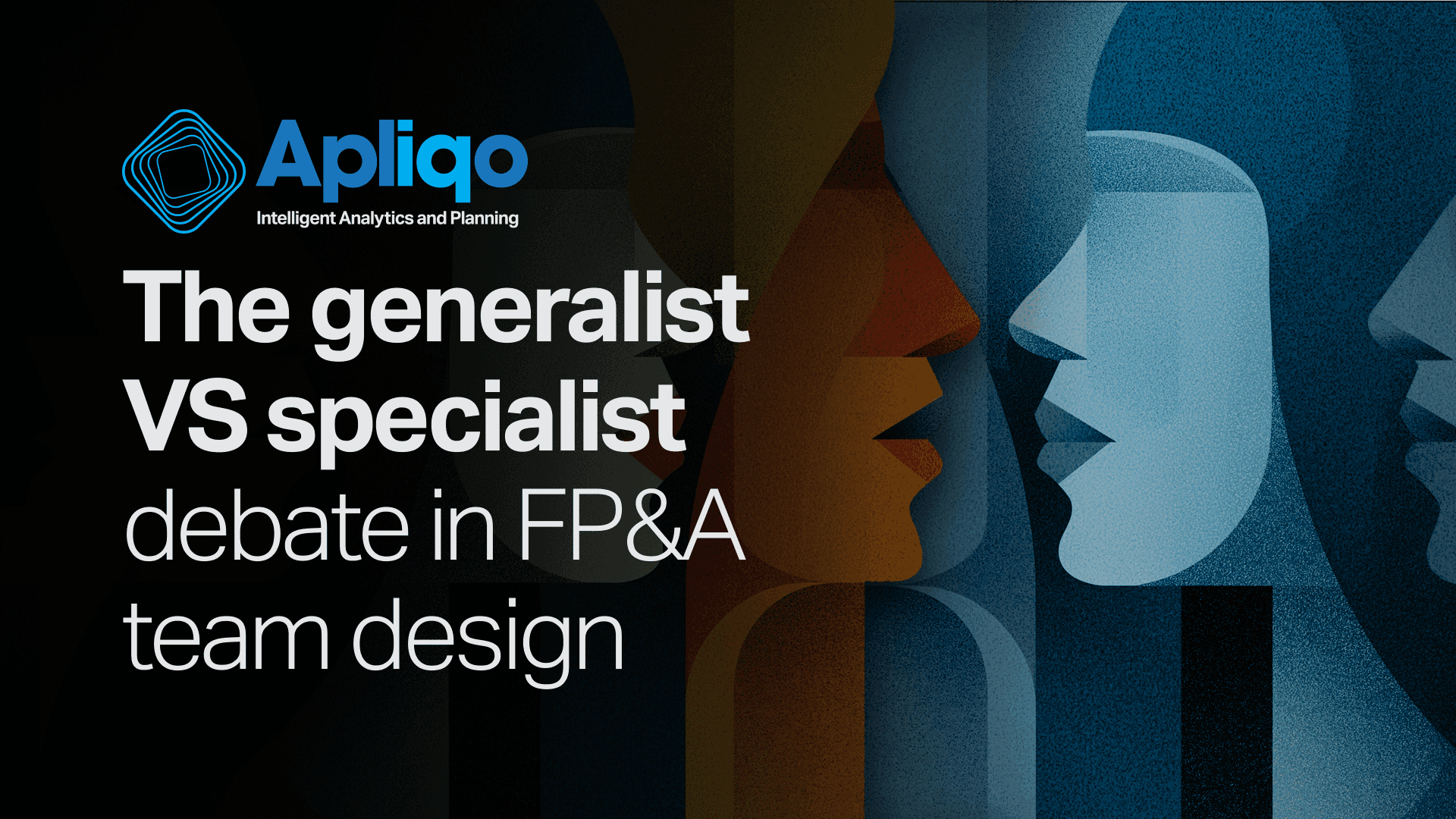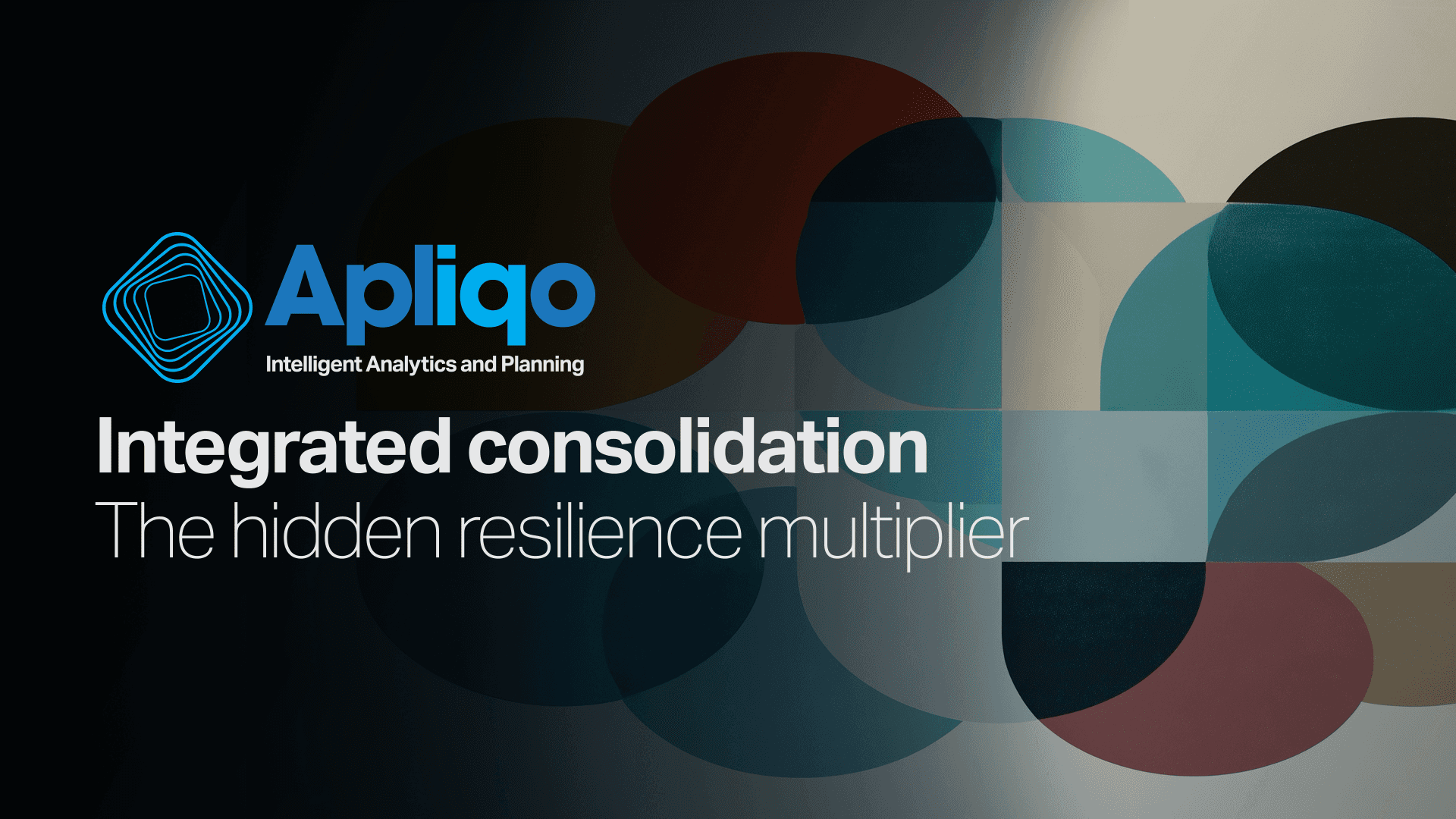Leveraging artificial intelligence in FP&A for competitive advantage
Artificial intelligence is reshaping financial planning and analysis (FP&A), but its real value lies in solving specific challenges, not replacing analysts. Forward-looking teams are using AI for anomaly detection, predictive modelling, and automated reporting to process data faster and focus human expertise on strategic decisions. The biggest hurdles are not the algorithms themselves but data quality, process consistency, and change management. This article explains how finance leaders can build a competitive advantage by adopting AI selectively and strategically, turning technology into actionable insights that drive smarter business outcomes.
Nov 13, 2025
//
6
min read
Subscribe to Apliqo Insights
The conversation about artificial intelligence in finance has reached a curious inflection point. Whilst vendors promise revolutionary transformation and consultants trumpet imminent disruption, the reality for most FP&A teams remains decidedly more measured. We're witnessing genuine progress in specific applications, alongside considerable confusion about where AI delivers actual value versus where it merely automates existing inefficiencies.
This isn't a story about robots replacing analysts or algorithms eliminating judgement. Instead, it's about understanding which AI capabilities are ready for practical implementation today, which remain promising but premature, and how thoughtful organisations are building competitive advantages through selective, strategic adoption.
The current state of AI in FP&A
After working with dozens of organisations exploring AI integration, a clear pattern emerges: success comes from solving specific, well-defined problems rather than pursuing broad digital transformation initiatives. The most effective implementations focus on augmenting human capabilities rather than replacing them.
Three areas have demonstrated consistent, measurable value: pattern recognition in large datasets, anomaly detection in routine processes, and natural language processing for report generation. These applications share common characteristics – they address tasks that humans find tedious but that require context and interpretation that purely automated systems cannot provide.
Anomaly detection in financial data represents perhaps the most mature AI application in FP&A today. Unlike traditional variance analysis that flags predetermined thresholds, AI-powered systems learn normal patterns within your specific business context and identify deviations that merit investigation. The key insight though, is that AI doesn’t replace analytical judgement; it directs analytical attention toward the transactions most likely to require human interpretation.
Predictive modelling for operational metrics shows similar promise when applied thoughtfully. AI models excel at identifying leading indicators within complex operational datasets, particularly when multiple variables interact in non-linear ways. This approach recognises that AI's strength lies in processing complexity, whilst human expertise remains essential for interpreting results and making strategic decisions.
Natural language processing for reporting addresses one of FP&A's most time-consuming tasks: translating numerical analysis into a business narrative. AI tools can generate initial draft commentary for variance reports, performance summaries, and board presentations, freeing analysts to focus on interpretation and strategic recommendations. However, implementation requires careful calibration. AI-generated text often lacks the business context and stakeholder awareness that make financial communication effective. The most successful applications treat AI as a starting point that human analysts refine and contextualise rather than a complete solution.
The implementation reality check
Despite vendor enthusiasm, AI implementation in FP&A remains challenging for practical reasons that have little to do with technology sophistication. Most organisations discover that their data infrastructure, process standardisation, and analytical maturity represent larger obstacles than AI capabilities themselves.
Data quality emerges as the primary constraint. AI algorithms require consistent, clean data to function effectively. Organisations with fragmented systems, inconsistent chart of accounts structures, or manual data entry processes must address these foundational issues before AI implementation becomes practical. AI success often depends more on organisational readiness than algorithmic sophistication.
Process standardisation proves equally critical. AI models learn from historical patterns, making them most effective within consistent operational frameworks. Organisations with highly variable processes or frequent structural changes may find AI recommendations less reliable than those with stable, standardised workflows.
Change management challenges exceed technical complexity. FP&A professionals often view AI recommendations sceptically, particularly when algorithms conflict with their experience-based intuition. Successful implementations invest heavily in user training and establish clear protocols for when human judgment should override AI suggestions.
Strategic considerations for FP&A leaders
The decision to implement AI capabilities requires an honest assessment of your organisation's analytical maturity and strategic priorities. AI works best as an accelerator of existing analytical capabilities rather than a replacement for fundamental FP&A competencies.
Start with your strongest analytical processes. AI amplifies existing capabilities, making robust processes more efficient whilst potentially magnifying the problems in weak processes. Organisations with mature forecasting practices, standardised reporting frameworks, and strong data governance typically see faster AI adoption success than those still developing these foundational capabilities.
Focus on specific business problems rather than general AI adoption. The most successful implementations begin with clear questions: "How can we identify revenue recognition issues more quickly?" or "What patterns predict customer payment delays?" These specific problems provide measurable success criteria and clear implementation boundaries.
Invest in hybrid solutions that combine AI capabilities with human expertise. Pure automation rarely delivers expected results in FP&A contexts that require business judgment and stakeholder management. Design implementations that leverage AI's pattern recognition strengths whilst preserving human decision-making for strategic and contextual considerations.
Building competitive advantage thoughtfully
The organisations gaining competitive advantage through AI in FP&A share common characteristics: they implement selectively, measure results rigorously, and maintain realistic expectations about AI capabilities and limitations.
They treat AI as one tool within broader analytical frameworks rather than a transformational technology that fundamentally changes how FP&A operates. This measured approach enables sustainable implementation whilst avoiding the disappointment that often follows over-ambitious AI initiatives.
More importantly, they recognise that competitive advantage comes not from having AI capabilities, but from using those capabilities to answer business questions more accurately and efficiently than competitors. The technology itself becomes commoditised quickly; the analytical insights and strategic decisions enabled by that technology create lasting differentiation.
The near-term opportunity lies in identifying specific analytical tasks where AI can improve accuracy, speed, or scope whilst preserving human judgment for strategic interpretation. This pragmatic approach builds organisational confidence in AI capabilities whilst delivering measurable business value. The longer-term potential involves integrating AI capabilities into comprehensive analytical frameworks that enhance human decision-making across all FP&A functions. However, realising this potential requires sustained investment in data infrastructure, process standardisation, and analytical skill development alongside AI technology adoption.
A measured path forward
For FP&A leaders considering AI implementation, success depends less on choosing the most sophisticated technology and more on honestly assessing organisational readiness and selecting applications that solve genuine business problems.
The organisations building sustainable competitive advantage through AI in FP&A aren't necessarily the earliest adopters or the most aggressive implementers. They're the ones approaching AI as a valuable tool within mature analytical frameworks rather than a revolutionary replacement for human expertise.
This measured approach may seem conservative compared to vendor promises and consultant enthusiasm, but it consistently delivers more reliable results than ambitious transformation initiatives that underestimate implementation complexity and overestimate technology capabilities.
The competitive advantage in AI-enabled FP&A ultimately belongs to organisations that combine technological capability with analytical sophistication and strategic clarity – a combination that requires patient, thoughtful development rather than rapid deployment.
To find out more about how Apliqo’s suite of solutions can help you achieve this, get in touch today. We’d love to see how we can help.









